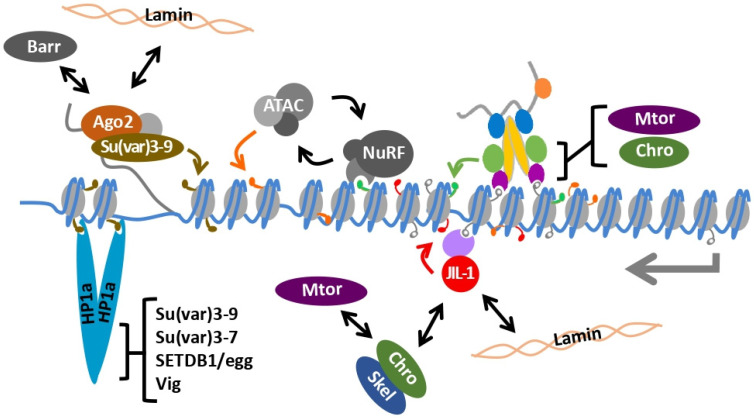Figure 2.
Genes that participate in heterochromatin formation modulate dosage compensation and X chromosome structure. (Left) Genes involved in heterochromatin establishment or the siRNA pathway. Ago2 recruits Su(var)3-9 to nascent transcripts in an siRNA-dependent manner, leading to enrichment of H3K9me2/3 (brown modification) and HP1a binding. Ago2 interacts with Barr, nuclear lamins and many other proteins, including HP1a. HP1a interacts with several other proteins that enhance roX1 roX2 male lethality. (Right) Proteins that interact with the dosage compensation machinery. Transcribed regions (gray arrow) are enriched for H3K36me3 (gray modification). Both the MSL complex (Top) and JASPER/JIL-1 (Bottom) bind H3K36me3 and are enriched in active genes. MOF acetylates H4K16 (green modifications). MOF and MSL3 interact with Chro, Mtor and several additional nuclear pore proteins (not shown). JIL-1 phosphorylates H3S10 (red modification), a mark enriched on the male X chromosome, and interacts with lamins, Chro and Skeletor. (Middle) H4K16ac enhances chromatin binding of the ISWI-containing NURF complex. The Gcn5-containing ATAC complex Interacts with NURF, acetylates chromatin (orange modifications) and may also modify NURF. Interactions are validated but may not be direct.

